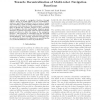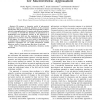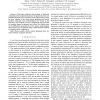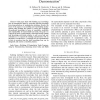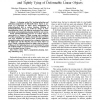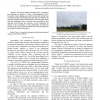ICRA
2005
IEEE
14 years 5 months ago
2005
IEEE
—We present a navigation function through which a group of mobile agents can be coordinated to achieve a particular formation, both in terms of shape and orientation, while avoid...
ICRA
2005
IEEE
14 years 5 months ago
2005
IEEE
— We propose a dynamics model of galvanotaxis (locomotor response to electrical stimulus) of the protozoan Paramecium. Our purpose is to utilize microorganisms as microrobots by ...
ICRA
2005
IEEE
14 years 5 months ago
2005
IEEE
— This paper addresses the problem of efficiently computing robot navigation functions. Navigation functions are potential functions free of spurious local minima that present a...
ICRA
2005
IEEE
14 years 5 months ago
2005
IEEE
- Walking-robot technology has reached an advanced stage of development, as has already been demonstrated by a number of real applications. However, further improvement is still ne...
ICRA
2005
IEEE
14 years 5 months ago
2005
IEEE
— In this paper we present a vision-based approach to self-localization that uses a novel scheme to integrate featurebased matching of panoramic images with Monte Carlo localizat...
ICRA
2005
IEEE
14 years 5 months ago
2005
IEEE
— A planning method for knotting/unknotting and tightening manipulation of deformable linear objects is proposed. It is important for linear object manipulation in industrial/med...
ICRA
2005
IEEE
14 years 5 months ago
2005
IEEE
Abstract— Mobile robots can be easily equipped with numerous sensors which can aid in the tasks of localization and ego-motion estimation. Two such examples are Inertial Measurem...
ICRA
2005
IEEE
14 years 5 months ago
2005
IEEE
– The paper presents a framework for cooperative fire detection by means of a fleet of heterogeneous UAVs. Computer vision techniques are used to detect and localize fires from i...
ICRA
2005
IEEE
14 years 5 months ago
2005
IEEE
— The E∗ algorithm is a path planning method capable of dynamic replanning and user-configurable path cost interpolation. It calculates a navigation function as a sampling of ...
